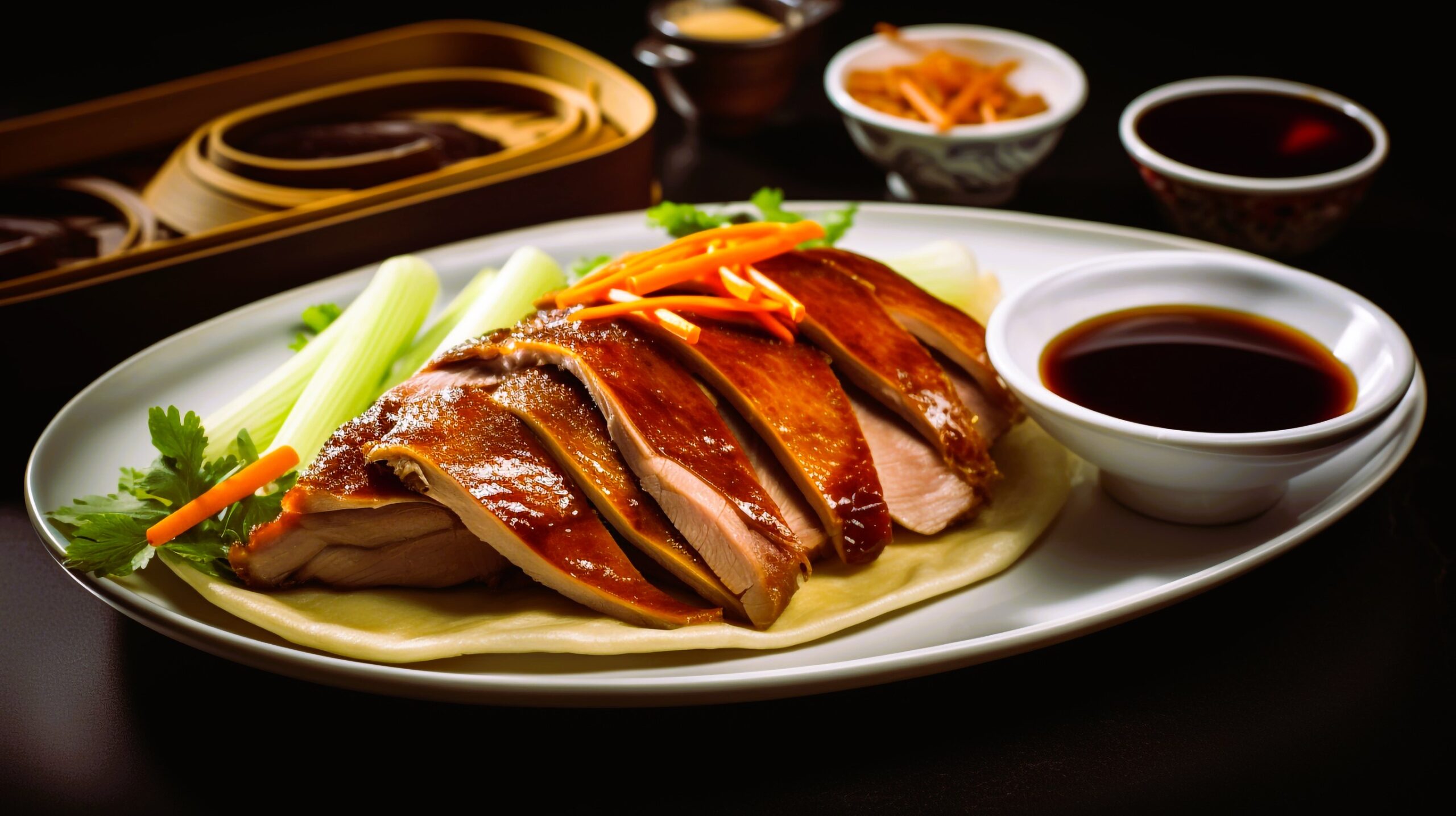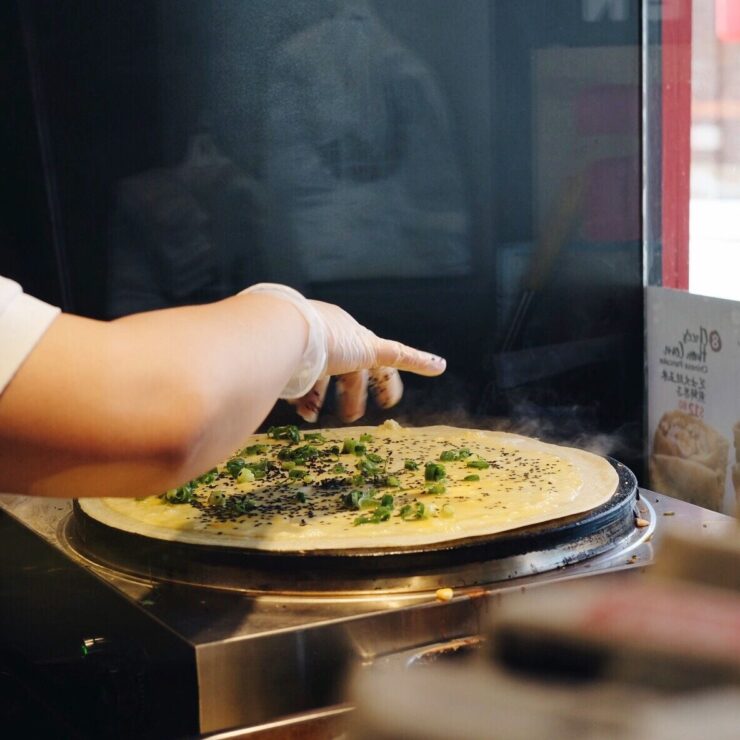Welcome, food enthusiasts and travelers! If you’re planning a trip to Beijing or simply exploring the rich tapestry of Chinese cuisine, there’s one iconic dish you absolutely cannot miss: Peking Duck. Renowned worldwide for its irresistibly crispy skin, tender and succulent meat, and a unique preparation process that dates back centuries, Peking Duck is more than just a meal—it’s a cultural experience. In this detailed guide, we’ll dive into the history, preparation, cultural significance, and tips for enjoying Peking Duck, especially for tourists visiting China or seeking an authentic experience elsewhere.
What is Peking Duck?
Peking Duck, also known as Beijing Duck, is a traditional Chinese dish that originated in Beijing during the Yuan Dynasty (13th century). It became a staple of imperial cuisine during the Ming Dynasty, where it was served to emperors and nobility. Today, it is considered one of China’s national dishes and a symbol of culinary excellence.
The dish is made from a specific breed of duck, often the Peking breed, which is raised for 45-60 days to achieve the perfect balance of fat and meat. What sets Peking Duck apart is its preparation: the duck is air-dried, roasted in a specialized oven, and served with thin, crispy skin separated from the tender meat. It’s traditionally enjoyed with thin pancakes, hoisin sauce, and sliced scallions or cucumbers, creating a harmonious blend of textures and flavors.
The History Behind Peking Duck
The origins of Peking Duck can be traced back to the Yuan Dynasty, when it was first mentioned in Chinese culinary texts. However, it gained prominence during the Ming Dynasty (1368–1644), when the imperial court moved to Beijing. Chefs in the capital refined the roasting techniques, creating the signature crispy skin that defines the dish today.
By the Qing Dynasty (1644–1912), Peking Duck had become a delicacy reserved for the elite. It wasn’t until the late 19th and early 20th centuries that the dish became accessible to the public, thanks to restaurants like Quanjude, established in 1864. Quanjude is one of the most famous Peking Duck restaurants in the world and is credited with popularizing the dish globally. Today, Peking Duck is a must-try for tourists visiting Beijing, and its fame has spread to Chinese restaurants worldwide.
How is Peking Duck Prepared?
The preparation of Peking Duck is an art form that requires precision, patience, and expertise. Here’s a step-by-step look at the traditional process:
- Selection of the Duck: Only high-quality ducks, typically the Peking breed, are used. These ducks are raised free-range for the first few weeks, then fattened to ensure a perfect layer of fat beneath the skin.
- Cleaning and Inflation: After slaughtering, the duck is cleaned thoroughly. Air is pumped between the skin and meat to separate them, which helps achieve the signature crispiness during roasting.
- Seasoning and Drying: The duck is coated with a mixture of maltose syrup, soy sauce, and other seasonings to enhance flavor and color. It is then hung to air-dry for 24-48 hours in a cool, well-ventilated area. This drying process is crucial for crispy skin.
- Roasting: Traditionally, the duck is roasted in a closed or hung oven using fruitwood (like date or peach wood) for a subtle smoky flavor. The roasting takes about 45-60 minutes, during which the skin turns a deep, glossy mahogany color.
- Slicing and Serving: Once roasted, the duck is carved tableside by a skilled chef. The crispy skin is often served separately as the first course, while the meat is wrapped in thin pancakes with hoisin sauce, scallions, and cucumber for a delightful mix of sweet, savory, and fresh flavors.
Why is Peking Duck So Special?
Peking Duck isn’t just about the taste; it’s a full sensory experience. Here are a few reasons why this dish stands out:
- Crispy Skin: The skin is the star of the show. When prepared correctly, it’s shatteringly crisp and lightly sweet, thanks to the maltose glaze.
- Succulent Meat: The meat beneath the skin is tender and juicy, with just the right amount of fat to keep it moist.
- Balanced Flavors: The combination of rich duck, sweet hoisin sauce, and fresh vegetables creates a perfect balance of flavors.
- Cultural Significance: Eating Peking Duck is a way to connect with centuries of Chinese history and culinary tradition.
Where to Eat Peking Duck as a Tourist
If you’re visiting Beijing, trying Peking Duck at its source is a bucket-list experience. Here are some iconic restaurants to consider:
- Quanjude Roast Duck Restaurant: Established in 1864, Quanjude is synonymous with Peking Duck. With multiple branches across Beijing, it’s a go-to spot for tourists. Their ducks are roasted using the traditional hung-oven method, and the tableside carving is a spectacle in itself.
- Dadong Roast Duck: Known for its modern twist on the classic recipe, Dadong offers a leaner duck with an even crispier skin. Their innovative approach has earned them international acclaim, and their restaurants are often more upscale.
- Bianyifang: Another historic restaurant, Bianyifang claims to be the oldest Peking Duck establishment, dating back to 1416. They use a closed-oven roasting technique, resulting in a slightly different flavor profile.
For tourists outside China, many high-end Chinese restaurants in cities like London, New York, and Sydney offer Peking Duck. However, authenticity varies, so look for establishments with good reviews and a reputation for traditional preparation.
Tip for Tourists: When dining in Beijing, make reservations in advance, especially at popular spots like Quanjude or Dadong. Also, don’t be shy to ask for a demonstration of how to assemble the duck pancakes if it’s your first time!
How to Eat Peking Duck Like a Local
Eating Peking Duck is a hands-on experience. Here’s how to enjoy it like a pro:
- Start with the Skin: Many restaurants serve the crispy skin first, often with a sprinkle of sugar for dipping. Savor the crunch and subtle sweetness.
- Assemble the Pancake: Take a thin pancake, spread a small amount of hoisin sauce, add a piece of duck meat (and skin, if you like), and top with a few slices of scallion and cucumber.
- Wrap and Eat: Fold the pancake into a small roll and take a bite. The combination of textures and flavors is simply divine.
- Don’t Waste Anything: After the skin and meat are served, the duck carcass is often used to make a flavorful broth or soup, which is a delightful way to end the meal.
Cultural Note: In China, sharing a whole Peking Duck with family or friends is a sign of togetherness and celebration. It’s often ordered for special occasions or to welcome guests.
Peking Duck Beyond Beijing: Global Popularity
Thanks to the Chinese diaspora and the globalization of cuisine, Peking Duck has found a home in restaurants worldwide. Cities with large Chinese communities, such as San Francisco, Toronto, and London, often have excellent options. However, the preparation might differ slightly due to local ingredients or roasting techniques. For the most authentic experience, seek out restaurants that specialize in Cantonese or Beijing-style cuisine.
Fun Facts About Peking Duck
- A Dish for Diplomats: Peking Duck gained international fame during the 1970s when it was served to U.S. President Richard Nixon during his historic visit to China. This event popularized the dish in the West.
- A Lengthy Process: From raising the duck to serving it, the entire process can take up to 60 days!
- UNESCO Recognition: While not officially listed, Peking Duck is often considered part of China’s intangible cultural heritage due to its historical significance.
Tips for Tourists Trying Peking Duck
- Timing: Peking Duck is best enjoyed fresh out of the oven, so avoid ordering it as takeout if possible. Dining in ensures you get the full experience.
- Pairing: In China, it’s often paired with light Chinese tea or a mild beer to cleanse the palate. Avoid heavy or overly sweet drinks that might overpower the flavors.
- Budget: A whole Peking Duck in Beijing can cost anywhere from $30 to $80 USD, depending on the restaurant. It’s usually enough for 2-4 people when paired with side dishes.
- Etiquette: If dining with locals, let the host or eldest person take the first bite as a sign of respect.
Peking Duck is more than just a dish; it’s a culinary masterpiece that embodies the richness of Chinese culture and history. With its crispy skin, succulent meat, and delightful accompaniments, it’s no wonder this dish has captured the hearts (and taste buds) of people worldwide. Whether you’re a tourist visiting Beijing for the first time or a foodie exploring Chinese cuisine in your hometown, Peking Duck promises an unforgettable dining experience.
So, the next time you’re in Beijing, make sure to reserve a table at a renowned restaurant like Quanjude or Dadong, and indulge in this world-famous delicacy. Roll up your sleeves, assemble your pancake, and savor every bite of this iconic dish. Have you tried Peking Duck before? Share your experience or let us know if you’re planning to try it on your next trip!
Happy travels and happy eating!



